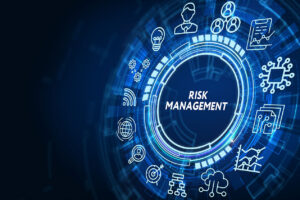
Navigating IT Compliance: A Practical Guide for Businesses
Introduction to IT Compliance
In an era where data breaches and cyber threats are rampant, IT compliance has become a critical focus for businesses across all industries. IT compliance refers to the process of adhering to laws, regulations, and standards that govern the protection, management, and use of information technology within an organization. These regulations are designed to ensure that businesses operate in a secure and ethical manner, safeguarding sensitive data and protecting the privacy of individuals.
Achieving IT compliance is not just about ticking boxes; it’s about establishing a culture of security and responsibility within an organization. Failing to comply with IT regulations can result in significant legal penalties, financial losses, and reputational damage. Moreover, compliance is often a requirement for doing business in certain industries, making it a critical aspect of operational success. This blog post will guide you through the essentials of IT compliance, including key regulations, steps to build a compliance program, and strategies for overcoming common challenges.
Key IT Compliance Regulations
Understanding the key regulations that govern IT compliance is the first step in ensuring your organization meets its legal and ethical obligations. Different industries are subject to different compliance requirements, but some regulations have a broader impact. Here are some of the most important IT compliance regulations that businesses need to be aware of:
- General Data Protection Regulation (GDPR): GDPR is a comprehensive data protection law that applies to organizations operating in or doing business with the European Union. It governs the collection, processing, and storage of personal data, requiring organizations to implement strict data protection measures. GDPR also grants individuals rights over their personal data, including the right to access, correct, and delete their information.
- Health Insurance Portability and Accountability Act (HIPAA): HIPAA is a U.S. law that applies to healthcare providers, insurers, and other entities handling protected health information (PHI). It sets standards for the security and privacy of PHI, requiring organizations to implement safeguards to protect against data breaches and unauthorized access.
- Payment Card Industry Data Security Standard (PCI-DSS): PCI-DSS is a set of security standards that applies to organizations that process, store, or transmit payment card information. The standard outlines requirements for securing cardholder data, including encryption, access controls, and regular security assessments.
- Sarbanes-Oxley Act (SOX): SOX is a U.S. law that applies to publicly traded companies, requiring them to implement internal controls to ensure the accuracy and integrity of financial reporting. IT compliance with SOX involves safeguarding financial data, ensuring proper access controls, and maintaining audit trails.
Each of these regulations has specific requirements that organizations must meet, and non-compliance can result in severe penalties. For instance, GDPR violations can lead to fines of up to 4% of a company’s global annual revenue or €20 million, whichever is higher. Therefore, understanding and adhering to these regulations is crucial for avoiding legal repercussions and maintaining customer trust.
Building a Strong IT Compliance Program
Creating a robust IT compliance program requires a systematic approach that encompasses all aspects of your organization’s IT environment. Here’s a step-by-step guide to building and maintaining an effective IT compliance program:
- Conduct a Compliance Audit: The first step in building an IT compliance program is to conduct a comprehensive compliance audit. This involves reviewing your organization’s current practices, identifying gaps in compliance, and assessing the risks associated with non-compliance. The audit should cover all relevant regulations and standards, as well as internal policies and procedures.
- Implement Policies and Procedures: Once you’ve identified areas of non-compliance, the next step is to implement policies and procedures that address these gaps. This may include developing new security protocols, updating data handling practices, and establishing incident response procedures. It’s important to document these policies and ensure they are communicated to all employees.
- Employee Training and Awareness: Compliance is not just the responsibility of the IT department; it requires the involvement of all employees. Providing regular training and awareness programs is essential for ensuring that employees understand their role in maintaining compliance. This includes training on data protection, secure communication practices, and how to recognize and report potential security incidents.
- Continuous Monitoring and Reporting: IT compliance is an ongoing process that requires continuous monitoring and reporting. Implementing tools and systems to track compliance metrics, monitor security controls, and detect potential issues is crucial for maintaining compliance over time. Regular reporting to management and stakeholders ensures that compliance efforts are transparent and effective.
- Engage with Legal and Compliance Experts: Given the complexity of IT compliance regulations, it’s often beneficial to engage with legal and compliance experts who can provide guidance and support. These experts can help interpret regulatory requirements, develop compliance strategies, and ensure that your organization stays up to date with evolving regulations.
Challenges in IT Compliance
While establishing an IT compliance program is essential, businesses often face several challenges in maintaining compliance. Here are some common challenges and strategies to overcome them:
- Keeping Up with Regulatory Changes: IT compliance regulations are constantly evolving, making it challenging for organizations to stay up to date. To address this, businesses should establish a process for monitoring regulatory changes and regularly review and update their compliance programs. Engaging with compliance experts and subscribing to industry updates can also help ensure that your organization remains compliant.
- Integrating Compliance into Business Processes: Compliance should be integrated into the day-to-day operations of the business, rather than being treated as a separate initiative. This requires aligning compliance objectives with business goals and ensuring that compliance is considered in decision-making processes. Developing a culture of compliance within the organization, where employees understand the importance of adhering to regulations, is key to successful integration.
- Managing Compliance Across Multiple Jurisdictions: For businesses operating in multiple countries, managing compliance across different jurisdictions can be particularly challenging. Each country may have its own set of regulations, which can sometimes conflict with one another. To navigate this complexity, businesses should develop a global compliance strategy that takes into account the requirements of each jurisdiction and prioritize compliance efforts based on the most stringent regulations.
- Balancing Compliance with Innovation: In today’s fast-paced business environment, companies are constantly innovating to stay competitive. However, rapid innovation can sometimes lead to compliance risks, particularly if new technologies or processes are implemented without proper oversight. To balance compliance with innovation, organizations should establish a framework for evaluating the compliance implications of new initiatives and ensure that compliance is considered early in the development process.
The Future of IT Compliance
The landscape of IT compliance is continuously evolving, driven by new regulations, emerging technologies, and changing business practices. Here are some trends that are likely to shape the future of IT compliance:
- Emerging Regulations and Standards: As data breaches and cyber threats become more prevalent, governments and regulatory bodies are introducing new regulations and standards to protect sensitive information. Businesses will need to stay ahead of these developments by regularly reviewing and updating their compliance programs.
- The Role of Automation and AI in Compliance Management: Automation and artificial intelligence (AI) are playing an increasingly important role in compliance management. These technologies can help streamline compliance processes, improve accuracy, and reduce the burden of manual tasks. For example, AI-driven tools can automatically monitor compliance metrics, detect anomalies, and generate reports, allowing organizations to respond more quickly to potential issues.
- Compliance as a Competitive Advantage: As customers and partners become more concerned about data privacy and security, demonstrating a commitment to compliance can become a competitive advantage. Businesses that prioritize IT compliance can differentiate themselves from competitors, build trust with stakeholders, and enhance their reputation in the market.
Conclusion
In conclusion, IT compliance is a critical aspect of modern business operations, ensuring that organizations operate within the bounds of the law and protect sensitive data from cyber threats. By understanding the key regulations, building a strong compliance program, and overcoming common challenges, businesses can achieve and maintain compliance while supporting their overall goals. As the regulatory landscape continues to evolve, staying ahead of compliance requirements will be essential for long-term success.



